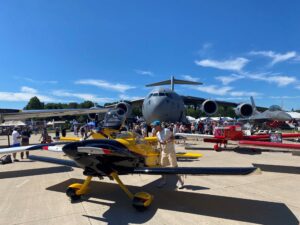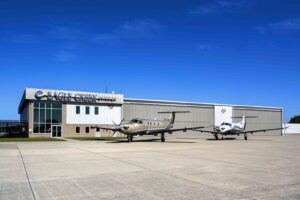Originally published in Flight Levels magazine.
Over the years there have been a variety of cases of aircraft running out of fuel, be they experimental, general aviation, or commercial aircraft. Some events have led to minor incidents and others to accidents, including death. Some cases were caused by poor planning (Do you really have enough fuel on board for this flight? Did you did actually check it?), some happened due to poor preflight, some due to miscommunication, and some due to mechanical issues. Mechanical issues range from indication system failures or inaccuracies to loss of fuel caps, fuel line failures, etc.
It doesn’t matter if your aircraft fuel quantity indication system is as simple as a cork float and a marked stick poking out the top of the tank, one with floats driving potentiometers, a system that has an AC- or DC-powered transformer using a float with an iron slug or a capacitance type system. All fuel quantity systems need to be calibrated every so often, to ensure you are seeing an accurate indication in the cockpit.
Some aircraft only indicate the fuel level up to a certain point and nothing above that level while others may have a mid-level zone where, due to the physical layout of the storage tanks and location of the probes, the indication is somewhat nebulous. Yet another system takes into account fuel density and is extremely accurate throughout its range.

Regardless of the type of fuel-quantity measurement and indication system, it should be as accurate as possible when the level is close to the zero level to ensure the aircraft still has some minimal level of fuel remaining on board when the indication is showing zero fuel. (The specs call for some amount of fuel in the tanks, even if the gauge indicates zero.)
I can hear it now. “I have a very accurate fuel flow indicating system, so I don’t really care about the level indication.” My response can only be, Oh really? So, you fly a turbine-powered aircraft with a fuel totalizer indication system that most piston-engine-powered aircraft do not have. Do you know for a fact that it is accurate? Do you know when it was last calibrated, or when it is due for its next calibration, if ever? Do you know how much fuel is on board? Remember, it is ultimately up to you, the owner/operator, to ensure the aircraft is in an airworthy condition.
Some aircraft manuals have very vague, if any, re-calibration requirements. I have seen manuals where there is no mention of fuel level calibration requirements, others where re-calibration is based on operator suspicion and others where there is a specific hard time with detailed instructions to execute the process.

Interestingly, it seems that aircraft produced just after WWII had very little information, whereas with current production aircraft it is presented in detailed step-by-step instructions with specific events and times when calibration is to take place. Some systems have the mechanics drain the system; add a specific, measured quantity of fuel; set zero; then fill it, and set full. Others have the mechanic drain all the fuel, add a measured quantity of fuel, set zero, fill the system full, and then slowly defuel it noting the indication for every specified drop in mass.
Whatever fuel system is in your aircraft, check with your favorite mechanic or Twin Commander Factory Authorized Service Center, ask them to look in your records and tell you when the system was last calibrated and when it is next due. If in doubt, have it checked out and recalibrated. Don’t forget to check your fuel level on every flight. One more thing – have you sumped your fuel system to ensure there is no water in it? And yet one more thing yet—was the aircraft serviced with the correct grade and correct type of fuel?
Mike Grabbe is a leader in Twin Commander service and training. He serves as Eagle Creek’s Technical Advisor.





